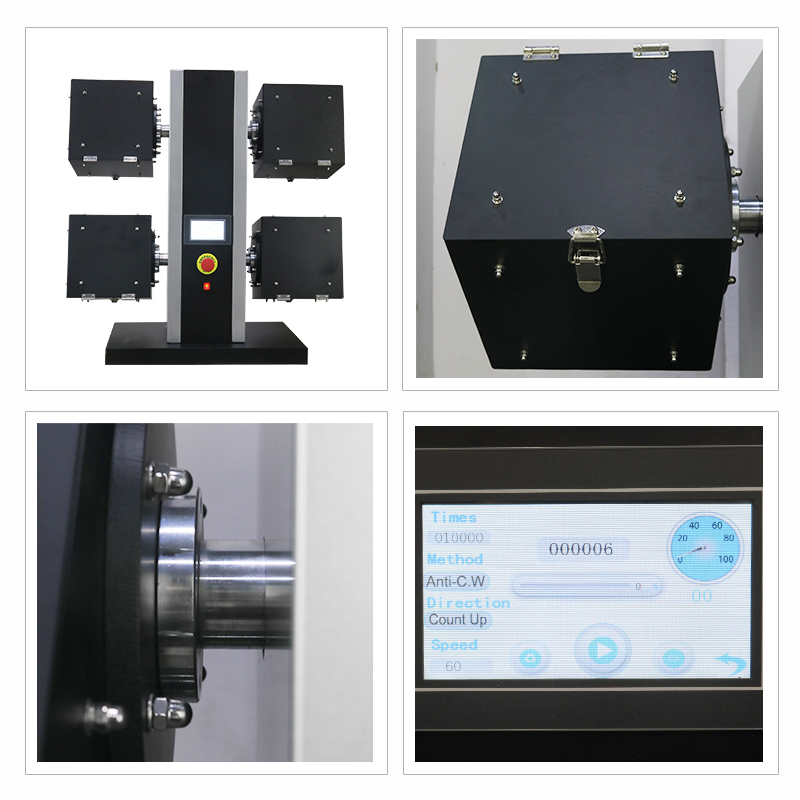ICI Pilling and Snagging Tester is used for determination the surface pilling and snagging properties of both woven and knitted materials.
Standards:
GB/T4802.3, ISO 12945.1, BS5811, IWS TM152.
Principal:
Specimens are mounted on polyurethane tubes and tumbled randomly in a cork-lined box at a constant rotational speed. Fuzzing and pilling is assessed visually after a defined period of tumbling.
Preparation of test specimens:
1. Pretreatment: Unless otherwise agree, launder or dry clean the sample using a method agree between the interested parties.(It's recommended to launder or dry clean test specimens in order to protect the friction surfaces of the pilling box and specimen tubes from lubricants or finishes which may cause inconsistent result.)
2. From the sample, cut four test specimens, each 125mm x 125mm. An additional cut specimen of 125mm x 125mm is required for assessment. 2 specimens were folded inward along the longitudinal direction, and 2 specimens were folded inward along the lateral front. Sew 12mm from the cut edges by sewing machine.
3. Turn each stitched sample inside out, so that the fabric face forms the outside of a tube, and cut 6mm of each end ofthe fabric tube to remove any sewing distortion. Mount one prepared specimen on each polyurethane specimen tube, and fixed by PVC tape.(So that the tape fixes the specimen on to the tube and leaves 6mm of the polyurethane specimen tube exposed.) The length of tape on each end of the specimen shall not exceed a length of approx. 1.5 times the circumference of the tube.
4. Conditioning.

Procedure :
(1) Clean the pilling box
(2) Place 4 mounted specimens from the sample in the pilling testing box. Close and firmly secure the lid. Tumble the tubes in the box for the agreed number of revolutions.
(3) Preset number of turns. No agreement, the woolen fabric turns 7200 rpm and the fine imitation fabric turns 14400 rpm.
(4) Start running, after the test, take out the sample and stitch, finally grade the sample.

